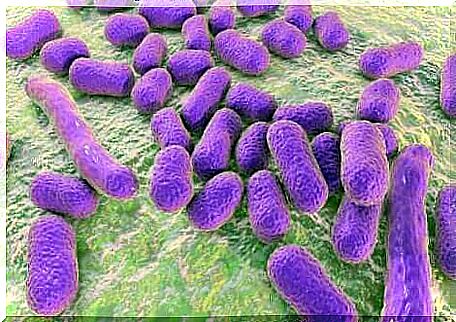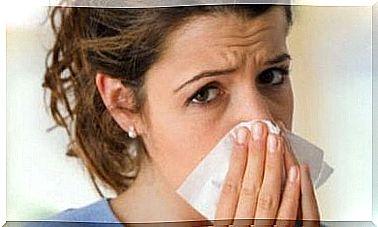Some Common Pathogens In Summer

As we all know, summer arrives hand in hand with a sudden rise in temperatures. As a result , it also increases the likelihood of developing certain infections since certain microorganisms are able to spread in these conditions. So, what are some common pathogens in the summer?
Exposure to viruses, bacteria and fungi can occur at any time of the year. Given the specific characteristics of the summer, however, some manage to spread more easily during the summer months. In the sections below, we will tell you more about the most common diseases and how they affect our health.
What is a pathogen?
The term pathogen refers to any microorganism that has the ability to cause discomfort or disease in the host in which it resides. This definition includes any type of bacillus, including viruses, bacteria, fungi, protozoa and other more complex microorganisms.
It is important to note that some of the diseases we mention below have several origins due to their clinical symptoms. In other words, they can either be due to pathogens or different genera and even different orders. In the same way, these groupings help to simplify treatment.
What are some common pathogens in summer?

Viruses and bacteria can cause inflammation
Conjunctivitis and ear infections are inflammatory diseases that dominate public swimming pools in the summer. Conjunctivitis has to do with the inflammation of the conjunctival layer – the mucous membrane that covers the inside of the eye. These are the following symptoms:
- Swelling of the eye
- Redness in the eye
- Tears
- Yellow discharge
Conjunctivitis can have either a viral or bacterial origin. In most cases, however, adenovirus is the culprit. This virus spreads through direct contact as well as through particles in contaminated water.
On the other hand, ear infections are usually caused by bacteria if we are talking about infections in the outer part of the ear canal. Depending on the location, ear infections are usually classified as internal (internal ear infection) or external (external ear infection). The clinical manifestations include the following:
- Difficulty hearing
- Pain in the ear
- Sensitive to touch
Both diseases have something in common: The pathogens that cause them, whether caused by viruses or bacteria, reside in the water and in hot environments. Warm swimming pools are therefore the perfect breeding ground for this type of superficial inflammation.
With this in mind, it is important to practice proper hygiene measures and bring your own personal items. Remember that these microorganisms also survive on surfaces.
Pathogens that cause food poisoning

Who has not experienced the accident of suffering from intense diarrhea after a buffet in the summer? Food poisoning seems to be the order of the day when it comes to summer.
This happens primarily because temperature rises tend to favor the proliferation of many organisms that cause food poisoning. Secondly, it happens because our habits change while we are on vacation. Eating on the beach or by the pool, where hygiene measures are low, is much more risky than eating in your own clean kitchen.
According to MedlinePlus , the following are some common pathogens that cause this clinical condition in summer:
- Bacteria belonging to the genus Campylobacter genus, Gram-negative bacilli that are mobile given the presence of flagella.
- The E. coli bacterium that usually lives among the microbiota in the gut without causing problems. However, certain strains cause diarrhea when they attach to the lining of the intestine.
- Vibrio cholerae , a bacterium that consists of two serotypes that cause what we know as cholera.
- Bacteria belonging to the genus Salmonella are better able to multiply in warmer temperatures.
As you can see, almost all cases of diarrhea in the summer are caused by different bacteria. This is because it is easier for the animals’ microbiota to mix with the meat when it is not handled properly. At the same time, it is more common for the water used to boil or clean the utensils to become contaminated.
Other common pathogens in summer
The pathogens we mentioned above take the premium when it comes to prevalence in the summer months. However, we can not conclude this article without mentioning some other pathogens that are common in the summer.
- According to the World Health Organization, there are ten common diseases that are transmitted from insects to humans. The reproductive cycle of most of these species ends in adulthood during the spring and summer. The prevalence therefore increases during these seasons. Some examples of these diseases may be dengue, malaria, leishmaniasis and yellow fever, which are often caused by viruses and protozoa.
- The fungi that cause skin diseases are also very common during the summer. Once again, installations such as swimming pools and public toilets are the perfect breeding ground. This is because high temperatures and humidity promote the growth of these fungi.
As you can see, the list of pathogens that cause summer illness is virtually endless. Bacteria are in the lead since they cause both inflammatory diseases and cases of gastroenteritis and diarrhea.
It is therefore important to exercise extreme caution when choosing where to eat, shower, bathe and go to the bathroom when you are on vacation. Not only that, if you develop any symptoms of an infection, we recommend going to a doctor as soon as possible.









